Activated Carbon For Amine Treatment Heycarbons Manufacturer From China
- Over 20 years of industry experience in activated carbon manufacturing for amine solution treatment.
- The annual output of activated carbon is 18,000 tons.
- 16pcs Production patents.
- Activated carbon treatment prevents amine solution from foaming. Different treatment methods for MDEA and DEA.
- Heycarbons activated carbon: high mechanical strength 95%, good wear resistance; uniform pore size distribution.
You will get a quote in 24 hours
What is Amine?
Amine solution is widely used in natural gas purification and chemical processes, mainly for the absorption and removal of acidic gases (such as carbon dioxide CO₂ and hydrogen sulfide H₂S). Its core mechanism is that amine compounds react chemically with acidic gases in the liquid phase to generate reversible intermediates, thereby achieving gas separation and purification.
However, during long-term operation, the amine solution will react with acidic gases, oxygen in the air and other impurities to generate impurities such as heat-stable salts, organic acids, and degradation products. The accumulation of these impurities will not only reduce the absorption efficiency of the amine solution, but may also cause a series of problems such as foaming, corrosion, and catalyst poisoning.
For this reason, activated carbon with excellent adsorption performance is widely used in the purification of amine solution. It can effectively remove the above impurities, maintain the chemical stability of the amine solution, extend its service life, and significantly improve the operating efficiency and safety of the desulfurization and decarbonization system.
You will get a quote in 24 hours
You will get a quote in 24 hours
Effects of Activated Carbon for Amine Treatment
When activated carbon is applied to amine liquid, it can remove heat-stable salts, adsorb degradation products, remove hydrocarbons and foaming substances, and decolorize amine solution.

Removal of Heat Stable Salts (HSS)
Sources of thermally stable salts
Formates, acetates, thiosulfates, sulfates, etc. generated by the reaction of amine solution (such as MEA, DEA, MDEA) with CO₂, H₂S, O₂, etc.
Chlorides and sulfides generated by the reaction of acidic gases such as HCl and SO₂ in the raw gas with amine solution.
Hazards
Reduce the absorption capacity of amine solution, increase corrosiveness, and cause problems such as foaming and equipment scaling.
The role of activated carbon
Some HSS (such as organic acids) can be adsorbed by activated carbon, but the adsorption effect of inorganic salts (such as Cl⁻, SO₄²⁻) is poor, and needs to be combined with ion exchange resin or electrodialysis treatment.
Adsorption of Degradation Products
Sources of degradation products
Amine solution oxidation (reaction with O₂) generates organic acids such as formic acid, acetic acid, oxalic acid, glycolic acid.
Thermal degradation (at high temperature) generates macromolecular compounds such as piperazine and imidazolinone.
Role of activated carbon
Efficiently adsorb these organic degradation products to reduce the risk of foaming and corrosion.
Removal of hydrocarbons and foaming substances
Sources of hydrocarbons
Heavy hydrocarbons (such as aromatics, asphaltene) or lubricating oils carried in the raw gas.
Hazards
Causes amine solution to foam, reduces gas-liquid contact efficiency, and increases amine solution loss.
Function of activated carbon
Adsorbs non-polar hydrocarbons and reduces foaming tendency.
Decolorization (improving the appearance of amine solution)
Amine solution may turn black or yellow after oxidation, and activated carbon can absorb some colored substances (but color is not a key indicator).
You will get a quote in 24 hours
You will get a quote in 24 hours
Different Applications of Activated Carbon in MDEA vs DEA System

Activated carbon treatment DEA (diethanolamine) and MDEA (methyldiethanolamine) are similar in application principle, but due to the different chemical properties, degradation mechanisms and pollutant types of the two amine solutions, there are certain differences in the specific role, usage and effect of activated carbon.
Activated Carbon in MDEA System
In the MDEA system, the tertiary amine structure is more stable and the amine solution degrades slowly, but aromatic hydrocarbons and asphaltene in the raw gas may enter the amine solution.
In view of this situation, we recommend that before the gas enters the MDEA system, a mechanical filter should be used to remove solid particles in the gas, and then the high specific surface area activated carbon should be used to adsorb hydrocarbons (such as benzene and toluene). Coal-based activated carbon is recommended in this process.
Notes
- Activated carbon as an auxiliary: mechanical filters are preferred to remove solid particles, and then activated carbon is used to adsorb hydrocarbons.
- Antifoaming agents are more critical: such as silicone oil defoamers, activated carbon is only used as a supplement.
- Monitoring focus: hydrocarbon content (GC analysis), suspended matter concentration.
Activated Carbon in DEA System
In the DEA system, amine solution is more susceptible to oxidation and thermal degradation, thereby generating small molecular organic acids such as formic acid, acetic acid, and oxalic acid, as well as polymers such as piperazine and imidazolinone. These organic degradation products and heat stable salts (HSS) easily cause amine solution to foam. In order to effectively avoid this situation, activated carbon can be used in the DEA system to purify amine solution.
These polar organics are easily captured by the mesopores and surface functional groups of activated carbon. It is recommended to use coconut shell activated carbon with developed mesopores.
Notes
- Activated carbon needs to be replaced frequently: DEA degrades quickly, and it is recommended to check the saturation every 1-3 months.
- Combined process: Ion exchange resin must be used to remove inorganic salts (such as Cl⁻, SO₄²⁻).
- Monitoring focus: organic acid content (titration method), foam height (ASTM D892).
You will get a quote in 24 hours
You will get a quote in 24 hours
Activated Carbon for Amine Filtration Benefits
- Reagglomeration creates optimal transport pores for faster adsorption.
- A consistent, high quality product with a strongly adsorbing wide-range pore structure optimal for the adsorption of a variety of degradation products and foam causing contaminants.
- High mechanical strength and uniform transport pore distribution resulting in excellent performance in a wide range of process conditions.
- Hardness and abrasion resistance required for environmentally friendly thermal reactivation and reuse and to minimize generation of fines in operations requiring backwashing or with intermittent flow patterns.
You will get a quote in 24 hours
You will get a quote in 24 hours
In MDEA: Activated Carbon for Hydrocarbons Removal
Does activated carbon remove hydrocarbons?
In the MDEA system, activated carbon assists in anti-foaming, mainly used to remove hydrocarbons and solid impurities. Amine liquid foaming control relies more on mechanical filtration + anti-foaming agent.
Before the hydrocarbon vapor enters the amine solution absorption tower, activated carbon pretreatment (the activated carbon filter is shown below) can be used to remove H₂S/CO₂ or hydrocarbon impurities to reduce the foaming of the amine solution in the amine desulfurization and decarbonization unit.
For H₂S/CO₂ adsorption, modified (NaOH/KOH impregnated) activated carbon has higher adsorption efficiency than ordinary activated carbon. H₂S and CO₂ molecules are captured by the micropores (<2 nm) and mesopores (2~50 nm) of activated carbon through van der Waals forces.
For hydrocarbon impurities adsorption, non-polar hydrocarbons (such as benzene, toluene, asphaltene) are adsorbed by the macropores (>50 nm) and mesopores of activated carbon through hydrophobic interactions, taking precedence over polar molecules (such as H₂O).
If the concentration of hydrocarbons is high, they will occupy the pores of activated carbon and reduce the adsorption efficiency of H₂S/CO₂, so regular regeneration or replacement is required.

You will get a quote in 24 hours
You will get a quote in 24 hours
Activated Carbon for Amine Solution DEA Purification Process
When the amine system requires regular maintenance or the pollutant load is low, we can use activated carbon to purify the amine in a bypass intermittent purification mode, with the goal of removing degradation products, heat stable salts (HSS), hydrocarbon impurities and solid particles.
The specific process is as follows:
Typical process flow of activated carbon to purify amine solution
1. Rich amine solution extraction
Divert 5~20% of the flow from the bottom of the amine solution absorption tower (rich amine solution) or the outlet of the circulation pump to the activated carbon filter.
2. Pre-processing filtration
Solid particles (such as iron sulfide and corrosion products) are removed through mechanical filters (5-10 μm) to protect the activated carbon bed.
3. Activated carbon adsorption
The amine solution enters the activated carbon fixed bed (filled with coconut shell or wood activated carbon, particle size 4~8 mesh), and stays at 40~60°C, 0.2~0.5 MPa for 10~30 minutes.
In this process, the activated carbon can remove organic degradation products (formic acid, acetic acid, piperazine), hydrocarbons (aromatics, asphaltene), some thermally stable salts (organic acid salts) and other substances in the amine solution.
4. Post-processing
The purified amine solution returns to the system lean amine solution tank or directly enters the regeneration tower.
5. Activated carbon regeneration
Check the adsorption saturation every 1 to 3 months and regenerate the carbon by hot steam (150 to 300°C) or directly replace it with new carbon.
You will get a quote in 24 hours
You will get a quote in 24 hours
Activated Carbon for Amine MDEA Customer Case
A Spanish customer needs HEYC 8×30 reagglomerated Briquetting coal based granular activated carbon to filter an amine solution MDEA and piperazine. Customers use amines to remove CO2 from a hydrogen production plants. The main substances removed are amine degradation compounds anti foaming.
| Specifications | HEYRGAC 8×30 |
|---|---|
| Type | Reagglomerated Coal Based Granular Activated Carbon |
| Iodine Number | min. 950mg/g |
| Molasses Number | min. 200 |
| Abrasion Number | min. 75 |
| Moisture Content | max. 2%w/w, as packed |
| Bed Density | 460kg/m3 |
| Mean Particle Diameter | 1.6mm |
| Hardness Number | 95 |
| Surface Area | 950m2/g, N2 BET method |
| Voids in Dense Packed Column | 36-40%Vol/Vol |
| Spedific Heat at 100°C | 1kJ/kg.K |
Heycarbons activated carbon is used extensively for the purifcation of:
- Recirculating amines
- Chemical intermediates
- Solvents and organic solutions
- Out of specification products
- High viscous organics
Heycarbons can also customize activated carbon according to your business. For more details, please contact us.
You will get a quote in 24 hours
You will get a quote in 24 hours
Activated Carbon for Amine DEA Customer Case
Heycarbons’ a Central Asian customer purchased activated carbon for:
- -the need to ensure the normal conditions of the technological process at the amine purification plant of natural gas from acidic components and for filtration of a 30% aqueous solution ofdiethanolamine (DEA);
- -maintaining the production process of a high-quality amine solution in accordance with the requirements.
Activated carbon as requested by customers is used to filter a 30% aqueous solution of diethanolamine (DEA) from amine degradation products, heat-resistant salts, corrosion products and polymers.
Activated carbon specifications
The customer’s basic technical requirements of granular activated carbon are as follows:
| Basic technical requirements | |
|---|---|
| Appearance | black extruded |
| Diameter | 3mm±0.02 |
| Specifie surface area (according to B.E.T.) | ≥950m2/g |
| lodine value | ≥950mg/g |
| Molasses value | 150-200 |
| Apparent density | 0.48-0.5g/cm3 |
| Humidity | ﹤5% |
| Ash content | ﹤15% |
| pH | ≥7 |
| Abrasive resistance | 95% |
Operating conditions
Below is the operating conditions for activated carbon filtration of a 30% diethanolamine (DEA) aqueous solution.
| Project | Specification |
|---|---|
| Operating pressure | 4050 kpa at 90°C |
| Temperature of the amine solution | 88-90 °C |
| Circulation of the amine solution | 520 m3 |
| Consumption of DEA solution through the filter | 49-78 m3 |
| Number of filters | 1 |
| Loading volume of activated carbon layer | 34.6 m3 |
| The design volume of the filter capacity | 67.7 m3 |
You will get a quote in 24 hours
You will get a quote in 24 hours
Heycarbons Activated Carbon for Amine Filtration Treatment
What is activated carbon for amine purification?
Heycarbons granualr activated carbon product is specifically for use in the oil refining and gas processing industries for the treatment of amine solutions (DEA, MDEA, etc). HEYGAC is produced in two particle size distribution ranges, 4×10 and 8×30. The availability of two mesh sizes enables the user to choose the proper product to meet specific pressure drop demands. Both size ranges have shown excellent adsorption characteristics when used in slipstream amine treatment applications.
Activated Carbon for Amine Filtration Features
- Reagglomerated metallurgical grade bituminous coal
- Uniformly activated granules
- High pore volume
- Faster adsorption
Activated Carbon for Amine Specifications
The following is the parameter information of the granular activated carbon for amine filtration that we mainly produce. If the customer needs it, we can also customize it according to the iodine value and specifications.
| Specifications | HEYGAC 4×10 |
|---|---|
| Butane Activity, wt% | min 23.3 |
| Moisture (As Packaged), wt% | max 2 |
| 4 US Mesh [4.75mm], wt% | max 6 |
| ﹤10 US Mesh [2.00mm](PAN), wt% | max 3 |
| Specifications | HEYGAC 8×30 |
|---|---|
| Iodine Number, mg/g | min 900 |
| Ash, wt% | max 10 |
| Moisture (As Packaged), wt% | max 2 |
| 8 US Mesh [2.36mm], wt% | max 15 |
| ﹤30 US Mesh [0.600mm](PAN), wt% | max 4 |
Activated Carbon for Amine Applications
HEYGAC is a granular activated carbon used in the purificationof re-circulating amine streams, in glycol dehydration units and gaspurification units where amines are used for sour gas treatment.
· Natural gas purification: Removal of acidic gases (such as H₂S and CO₂) from natural gas: Activated carbon is used to adsorb degradation products, heat-stable salts, organic impurities and heavy metals in amine liquid to extend the life of amine liquid and reduce foaming problems.
· Petroleum refining: Activated carbon can remove hydrogen sulfide and carbon dioxide produced during the refining process, and is used to regenerate amine liquid, remove degradation products and pollutants, prevent corrosion and foaming, and improve desulfurization efficiency.
· Fertilizer industry (such as synthetic ammonia unit): Activated carbon can remove harmful trace impurities in amine liquid, purify synthesis gas, and prevent poisoning of downstream catalysts.
· Coal chemical industry: Activated carbon is used to remove high molecular organic pollutants such as tar, phenols, asphaltene, etc. in amine liquid.
· Carbon dioxide capture (CCS): Activated carbon captures CO₂ from flue gas, improves the cleanliness and absorption efficiency of amine liquids such as MEA and DEA, and slows down the degradation of amines.
You will get a quote in 24 hours
You will get a quote in 24 hours
Heycarbons Different Activated Carbon Comparison for Amine
Heycarbons has three different activated carbons for your business: reagglomerated briquetting activated carbon, granular activated carbon and extruded activated caron. Each has its own advantages:
Reagglomerated briquetting activated carbon has a high molasses value and good decolorization effect; it is highly customizable and the molasses value and methylene blue of briquetting activated carbon can be customized through coal blending technology.
Granular activated carbon has a large adsorption capacity and is suitable for removing small molecular organic matter (such as degradation products and hydrocarbons) in amine solution. Good fluidity: suitable for packed tower or fluidized bed system, easy to operate. Considering the strength and versatility of usage, granular activated carbon has the highest cost-effectiveness.
Pelletized activated carbon has high strength, wear resistance and pressure resistance, and is suitable for high pressure or high flow rate systems.
You will get a quote in 24 hours
You will get a quote in 24 hours
Custom Heycarb Activated Carbon For Amine Solution Filtration
Heycarbons provides a full range of activated solutions at competitive prices.
You will get a quote in 24 hours

Custom Heycarbons activated carbon for your business
Heycarbons has proudly served the activated carbon industry with high-quality products since 2005, we can customize your coal activated carbon for your project.
- Personalized service and advice based on your needs and preferences. Different raw materials for different applications.
- Customized size, iodine value , methylene blue, PH, ash, etc. Also acid washing.
- Heycarbons customized package to promote your brand, and free design service.
Call Us
+86-180 3788 5195
Our Email
info@heycarbons.com
Steps to Custom Heycarbons Activated Carbon For Amine Treatment
Consultation
By understanding your needs and requirements, our salesmen work with you to submit the appropriate activated carbon solution.
Quotation
Heycarbons expert customer service will provide you with a free quote based on your requirements as well as product specifications and quantities.
Production
Heycarbons has sufficient inventory and strong production capacity, and will report production progress to you from time to time.
Shipping
Heycarbons know you need to receive the product as soon as possible, after rigorous quality checks and protective packaging, by fedex shipping.
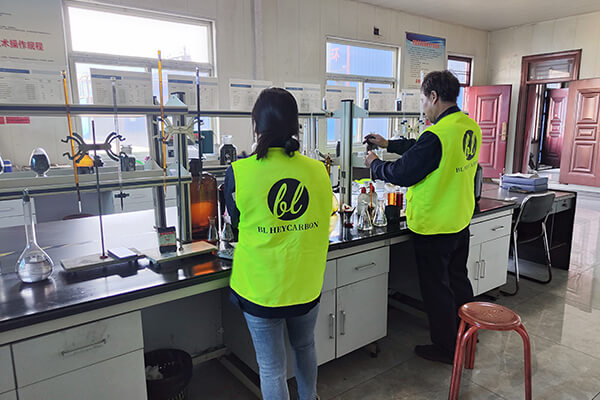
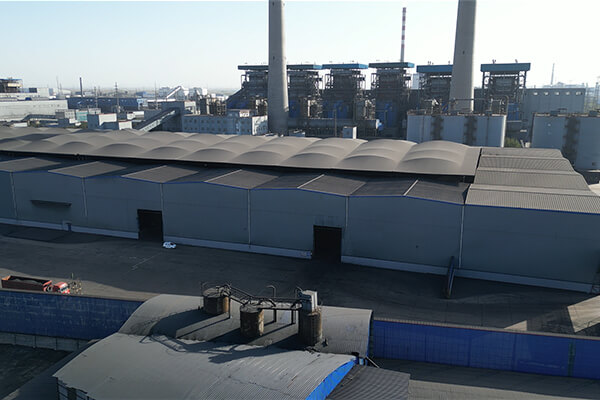
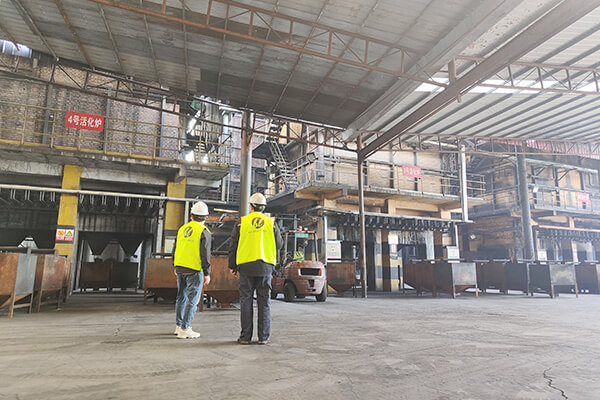

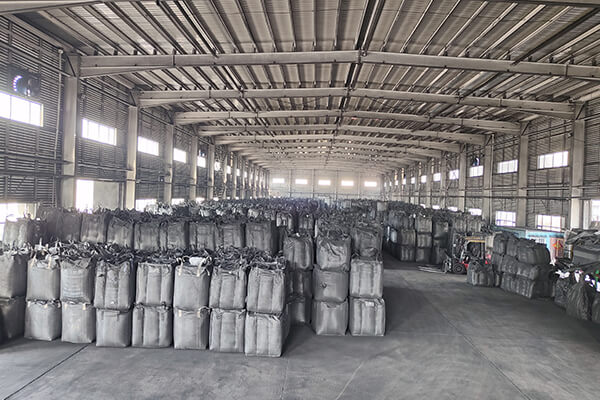
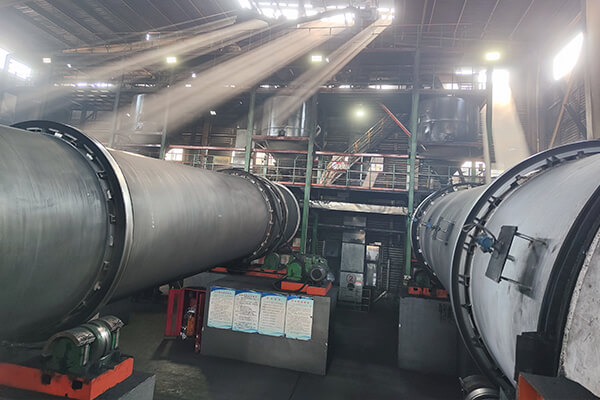



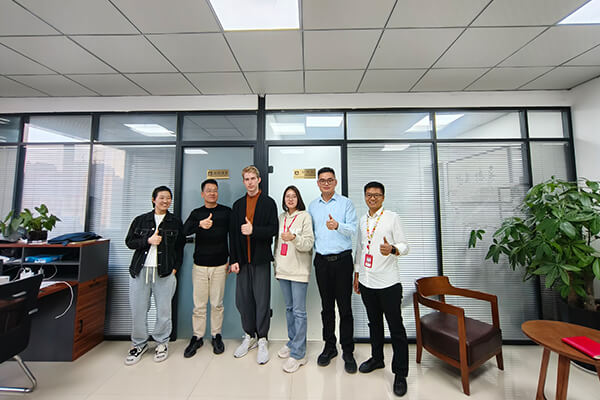

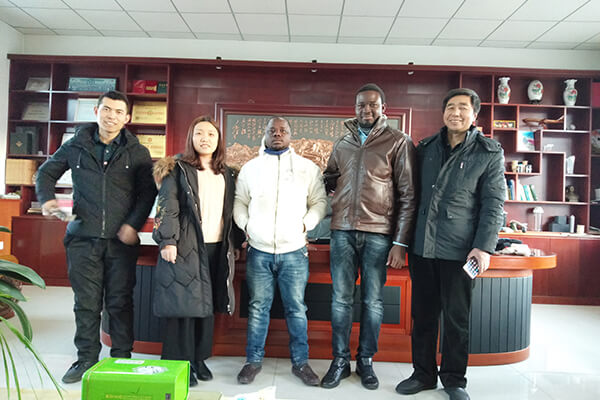
Heycarbons Activated Carbon For Amine Solution Treatment FAQs
Heycarbons provides on demand activated carbon solutions worldwide, product quality and customer service are highly rated by our partners and customers.
- Testing of selected raw materials
- Comprehensive display and monitoring of production temperature and time
- Sampling inspection of finished products
- Support any form of third-party testing , such as SGS
1. T/T Deposiit + Balance against copy of B/L
2. L/C
3. T/T deposit + L/C for balance
1. If necessary, the technician can go to the site to guide .
2. Order goods are consistent with the sample and TDS
3. Any quality problems occur, the seller will provide solutions within 24 hours.
4. If the package is damaged due to the seller’s negligence, resulting in a shortage of goods,
the seller should make compensation based on mutual agreement.
For customers’ trial orders, we actually do not have a specific MOQ, any amount is acceptable.
Heycarb need to choose a cost-effective transportation method and quantity based on your specific situation.
Normally , 5-7days , also depend on quantity
Yes, Heycarb provide samples for free.
Normally 25kgs/bag , 20kgs/bag , 500kgs/bag , black bag
Support any OEM drawing design bag .
Are You Looking for Heycarbons Activated Carbon For Amine Solution Treatment Manufacturers?
Contact us for design assistance, free quote, and expert advice today.
Your inquiry will be replied within 24 working hours, and Heycarbons respect your privacy.
You will get a quote in 24 hours



